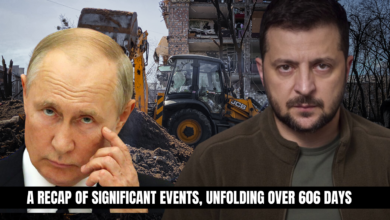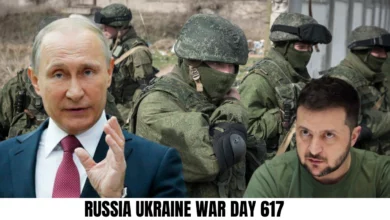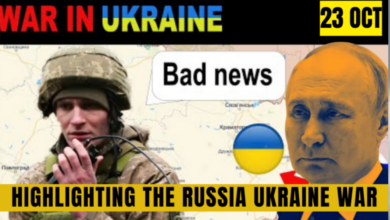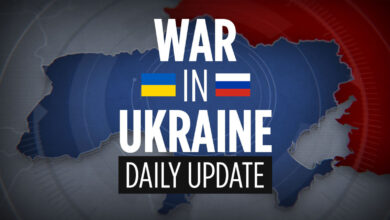The Crucial Battle: Ukraine and the West’s Unaffordable Stakes : Report
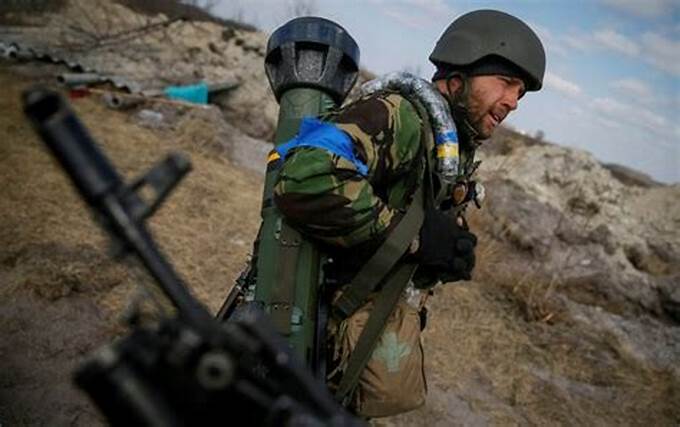
As the clock struck midnight on January 1, 2023, Ukraine found itself under a Russian missile attack, prompting global policymakers to grapple with two pivotal questions. The first inquiry revolved around the outcome of the ongoing Russian winter offensive, while the second focused on the anticipated results of Ukraine’s upcoming spring counteroffensive. The Crucial Battle unfolded against the backdrop of geopolitical tension, shaping the trajectory of international relations and the fate of the conflict-ridden region.
By May, the resolution to the initial question unfolded when Yevgeny Prigozhin opted to withdraw his Wagner Group troops from the remnants of Bakhmut. Seizing control of Bakhmut had extracted a heavy toll on Wagner, with an estimated 20,000 soldiers lost, predominantly comprised of convicts recruited by Prigozhin from Russian prisons.
This marked the only notable success of the offensive. Although Bakhmut was slated to stay under Russian control, a rebellion ensued when the Kremlin, deeming Yevgeny Prigozhin’s services unnecessary, directed the integration of his troops into the regular Russian army. This mutiny laid bare divisions between Russian political and military leadership, with a noticeable lack of urgency to safeguard the regime. The Kremlin’s response to the insubordination was drastic – Prigozhin was eventually assassinated. However, discontent within the military brass concerning Putin’s war strategy hinted at potential challenges on the horizon.
The Counteroffensive
The failure of the Russian offensive opened the door for Ukraine’s June counteroffensive. Despite some optimistic predictions, the destruction of the Russian Army-controlled section of the Kakhovka Dam on the Dnipro River effectively dashed Ukrainian hopes of using the dam as a bridge to cross the Dnipro and sever the supply lines connecting Russian troops in the south of Ukraine with their logistical hubs in Crimea.
As a result, the situation on the mainland reached a stalemate. Less than 200 square miles changed hands since the beginning of the year. Russia managed to stabilize the front line by bringing at least 300,000 additional soldiers and officers into the Russian army. Ukraine, as well as being outnumbered 3 to 1 in terms of manpower, lacked superiority and often even parity in firepower
Arms Supply Challenges
While the Ukrainians had received tanks, fighting vehicles, and antiaircraft missile batteries, the much-needed F-16 fighters and U.S. ATACMS long-range guided missiles remained elusive. Delays in supply stemmed from various reasons, including disagreements between NATO commanders and their Ukrainian counterparts on the required weaponry and timing, quarrels among allies on who should supply what (notably the public dispute between the U.S. and Germany regarding the supply of Leopard and Abrams tanks), and White House concerns about crossing Putin’s red lines and provoking a nuclear war.
Prolonged Conflict and Political Dynamics
Efforts to prevent the war from escalating undoubtedly contribute to lengthening it, potentially persisting through 2024 and beyond. Moreover, the battles of 2024 will unfold amid a crucial political event – the U.S. presidential election. This election holds significance for the future of the war, as the U.S. remains the largest Western supplier of weapons to Ukraine and is second only to the European Union in financial assistance to Kyiv. The prevailing political uncertainty in the U.S. is poised to significantly impact the country’s ability to provide Ukraine with crucial military aid.
Munitions Challenges and Russian Strategies
Ukraine is anticipated to encounter a munitions shortage in the upcoming year. However, the process for Ukraine’s Western partners to ramp up munitions production is time-consuming. While the U.S. has doubled the production of some artillery shells, meeting the demands of the Ukrainian front remains a considerable challenge.
Meanwhile, the European Union is unlikely to fulfill its commitment to supply one million shells to Ukraine. The unexpected Hamas attack on Israel and the potential initiation of a broader Middle Eastern conflict could exacerbate Ukraine’s munitions predicament.
Russia faces its own hurdles in terms of munition supplies, yet it has managed to address the gap with assistance from North Korea, which supplied Moscow with one million shells. Additionally, Putin’s adeptness in circumventing Western sanctions has contributed to stabilizing Russia’s economy and mobilizing its industry to meet wartime needs.
Plea for Cease-Fire and Land for Peace

As 2023 draws to a close, there is a growing chorus calling for a cease-fire and an eventual “land for peace” resolution.
However, caution is warranted as such an outcome is unlikely to yield stable or lasting peace in the region. Despite Ukraine engaging with its allies to discuss a “peace formula,” the Kremlin remains steadfast in pursuing its original goals. This includes the contentious demand for the so-called denazification of Ukraine, a coded expression for the dismantling of Ukraine’s political and intellectual elites.
For Ukraine, losing this war is not an option. The very existence of the Ukrainian state and nation hinges on the outcome. Concluding the conflict with a mere armistice, resulting in the loss of people and territories and lacking NATO membership, would be tantamount to conceding defeat. The stakes are high, and any resolution must align with Ukraine’s imperative to secure its sovereignty and future.
Geopolitical Ramifications: NATO, Baltic States, and Beyond
Even more critically, the success of Russia in Ukraine would pose an increased threat to NATO’s Eastern flank, notably affecting the Baltic states and Poland. Beyond Europe, it would embolden Moscow’s allies, Iran and North Korea, and set a troubling precedent for China in potentially pursuing military solutions for the Taiwan dispute. In these scenarios, U.S. and NATO troops could find themselves entangled in military conflicts similar to Ukraine’s current struggle, even without direct NATO involvement.
In many ways, the West faces a significant disadvantage due to the stark contrast in how the war is perceived in Russia and the West. While the Kremlin frames it as a life and death struggle with the U.S. and its allies, leveraging anti-Western hysteria in Russian media to mobilize the population and resources for such a war, Western governments largely view it as a conflict between Ukraine and Russia. Consequently, there is ongoing debate about the extent to which they should support Ukraine without overly antagonizing Russia. The divergence in perspectives underscores the complex dynamics shaping the international response to the conflict.
The Global Perspective: Future of the West
What the Western perspective is missing is that the pivotal question on the global agenda extends far beyond the fate of Ukraine. At stake in this war is not just the destiny of Ukraine but also the security of the West, the stability of the international order, and the future of democracy as a global force.
The outcomes of conflicts of such magnitude wield a profound influence on the trajectory of future generations. Even if much of the West has yet to fully recognize this, it is crucial to understand that this war is no exception.



